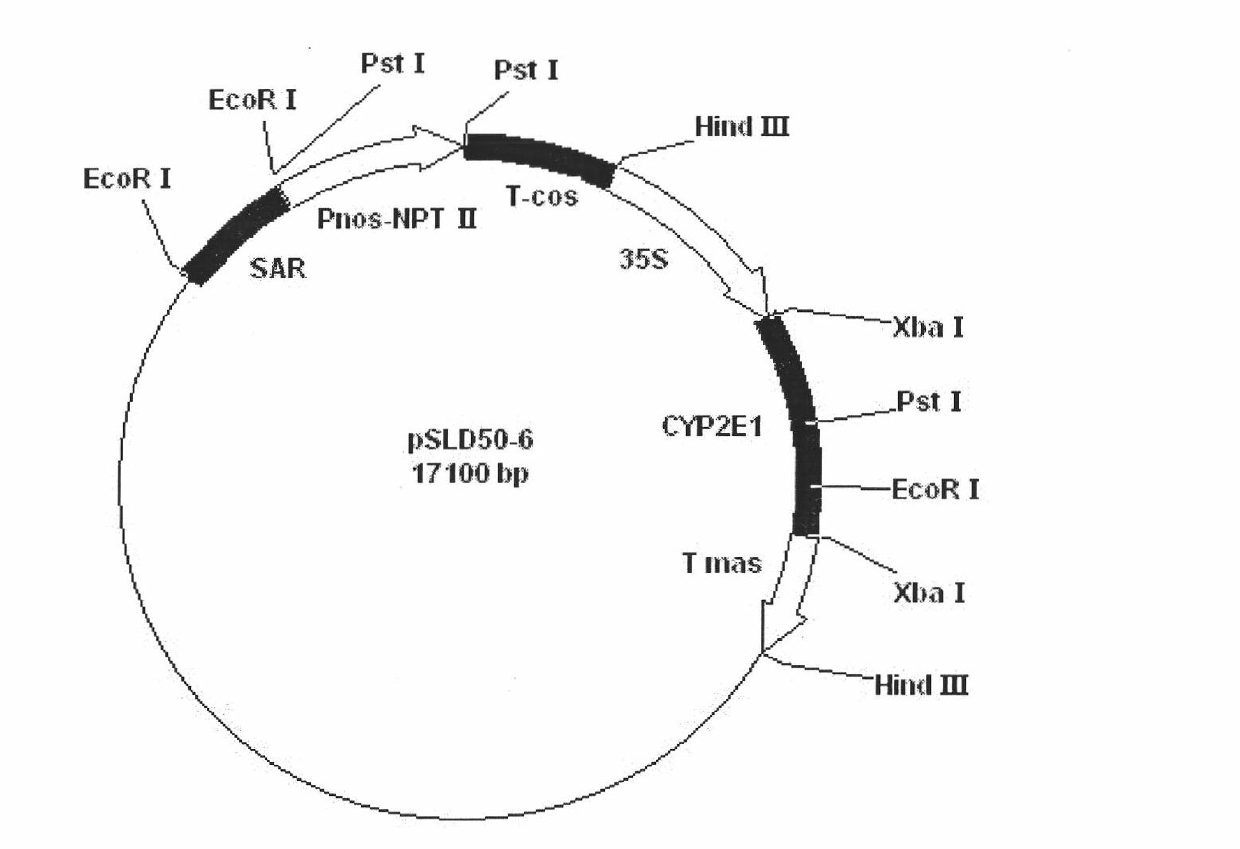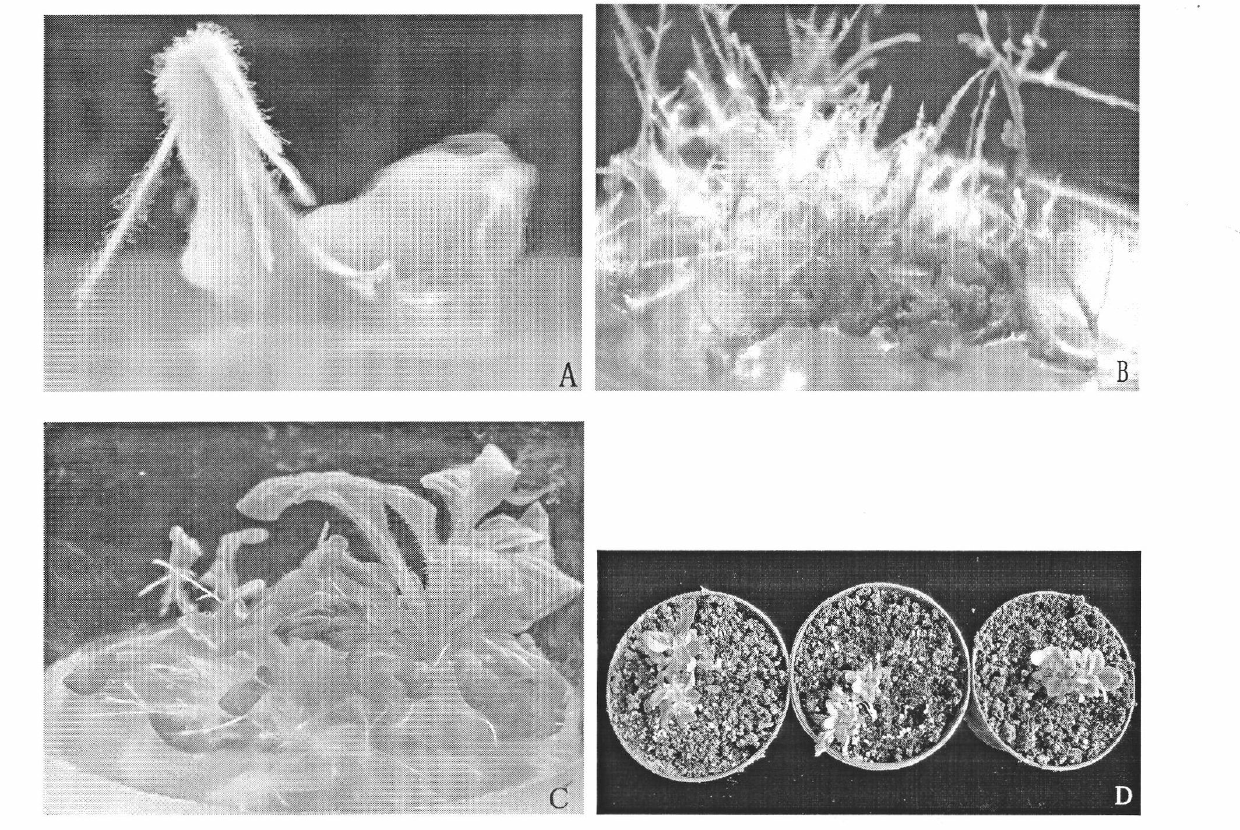Cultivating method of transgenic petunia capable of removing environmental pollutants efficiently
An environmental pollutant and genetically modified technology, applied in botany equipment and methods, horticultural methods, plant regeneration, etc., can solve the problems of low efficiency, improve the quality of life, and benefit the construction of the ecological environment
- Summary
- Abstract
- Description
- Claims
- Application Information
AI Technical Summary
Problems solved by technology
Method used
Image
Examples
Embodiment 1
[0025] 1. Materials and methods
[0026] 1.1 Materials
[0027]Petunia hybrida (Petunia hybrida) variety is QL01, and sterile seedlings were obtained by tissue culture of isolated leaves. The wild-type Agrobacterium rhizogenes K599 was preserved by the Key Laboratory of Botany, School of Life and Environmental Sciences, Hangzhou Normal University, and the plasmid pSLD50-6 containing the CYP2E1 gene (see figure 1 ) and the control plasmid pKH200 containing the GUS gene were donated by Professor Doty of Washington University.
[0028] 1.2 Plasmids pSLD50-6 and pKH200 were introduced into wild-type Agrobacterium rhizogenes K599
[0029] Plasmids pSLD50-6 and pKH200 were transformed into Agrobacterium rhizogenes K599 by freeze-thaw method, that is, about 0.1 μg of purified plasmid DNA was added to 100 μL of K599 competent cells, mixed well, placed on ice for 10 minutes, and placed in liquid nitrogen for quick freezing for 5 minutes , Immediately heat-shock in a 28°C water bath ...
PUM
 Login to View More
Login to View More Abstract
Description
Claims
Application Information
 Login to View More
Login to View More - R&D
- Intellectual Property
- Life Sciences
- Materials
- Tech Scout
- Unparalleled Data Quality
- Higher Quality Content
- 60% Fewer Hallucinations
Browse by: Latest US Patents, China's latest patents, Technical Efficacy Thesaurus, Application Domain, Technology Topic, Popular Technical Reports.
© 2025 PatSnap. All rights reserved.Legal|Privacy policy|Modern Slavery Act Transparency Statement|Sitemap|About US| Contact US: help@patsnap.com



